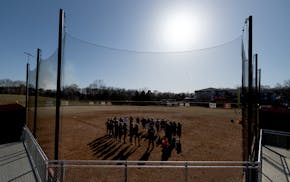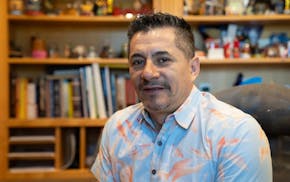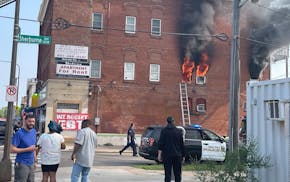By the time the polls close Tuesday, Minnesotans will have cast ballots for everything from U.S. president to the local soil and water supervisor.
Some vote by mail; some vote early, and some vote at the polls on Election Day.
And at 8:00 p.m. Tuesday when the voting stops — except for the people still standing in line — a bit of a lull sets in, and anxious election watchers refresh the Secretary of State's website or camp out on the Minnesota Star Tribune's live results page.
Those results come from more than 3,000 polling places to election offices in each of Minnesota's 87 counties. Here's how it works, and why it sometimes takes longer than anyone wants to wait:
From precinct to county
The process of counting Minnesotans' votes is a little different — within the parameters of state law — in various counties, Secretary of State Steve Simon said.
"This is a decentralized, spread-out process, by design," he said. "Our office never touches a ballot. We don't count the ballots. We just report what other people count. So this all happens at the local level."
At precincts, elections are overseen by election judges who represent both major parties. The first step to reporting results is an audit to make sure the number of ballots matches the number of voters that day.
"There's no room for error. It must be a 100% match," Simon said.
If that's good, in many counties, election judges have a machine tabulate results, or count votes for candidates. In these counties, one copy of the tape the that machine prints in this process is taken to the central office. In most places, that is the county elections office. In others, the central office is the city elections office, which then reports to the county, Simon said.
Some precincts are close to the elections office, and some are far away, which explains some of the variation in when results show up.
But not every county tabulates at the precinct.
In Ramsey County, judges take the ballot counting machines from precincts to the county's election office, Elections Manager David Triplett said. There, judges of different parties verify the machines' seals, check the number of ballots against the number of voters that day, and if they add up, tabulate the votes.
"We have 100 receipts; we have 100 ballots. All right, go ahead and let's report that result," he said.
It is legal for precincts to transmit results to central offices online, but it's rare, Simon said. And no devices used in the election can be connected to the internet while voting is in progress.
Early and absentee ballots
At the county or city central offices, elections officials manage early and absentee ballots. An ballot board with members from both parties reviews absentee ballots to make sure they are properly signed and witnessed.
For the first time this year, absentee ballots must be counted if they arrive at the elections office before 8 p.m. (Previously, they needed to be in by 3 p.m.) That could cause the reporting of results to take a bit longer than in past years, particularly in larger counties, Simon said.
From local elections offices to state
Counties don't all finish tabulating all those results at the same time.
"Smaller counties, it's often easier for them to tabulate more quickly. Bigger counties, the opposite," Simon said.
But once they do, those results get to the Secretary of State's office through a secure online election night reporting system.
The results on the Secretary of State's website are considered unofficial until they are certified.
In the days after the election, counties canvass and certify the results, making sure the results match the tapes. Then, a state canvassing board meets to certify results.
After the polls close Tuesday, follow results on the Minnesota Star Tribune's live results page.
In South Carolina, Walz says Democrats 'need to change the attitude'
Two injured in shooting outside University of Minnesota arena after high school graduation

What are Minnesota's high school league rules on transgender athletes?

Latino developer has big plans for four razed lots near former Third Precinct in Minneapolis

